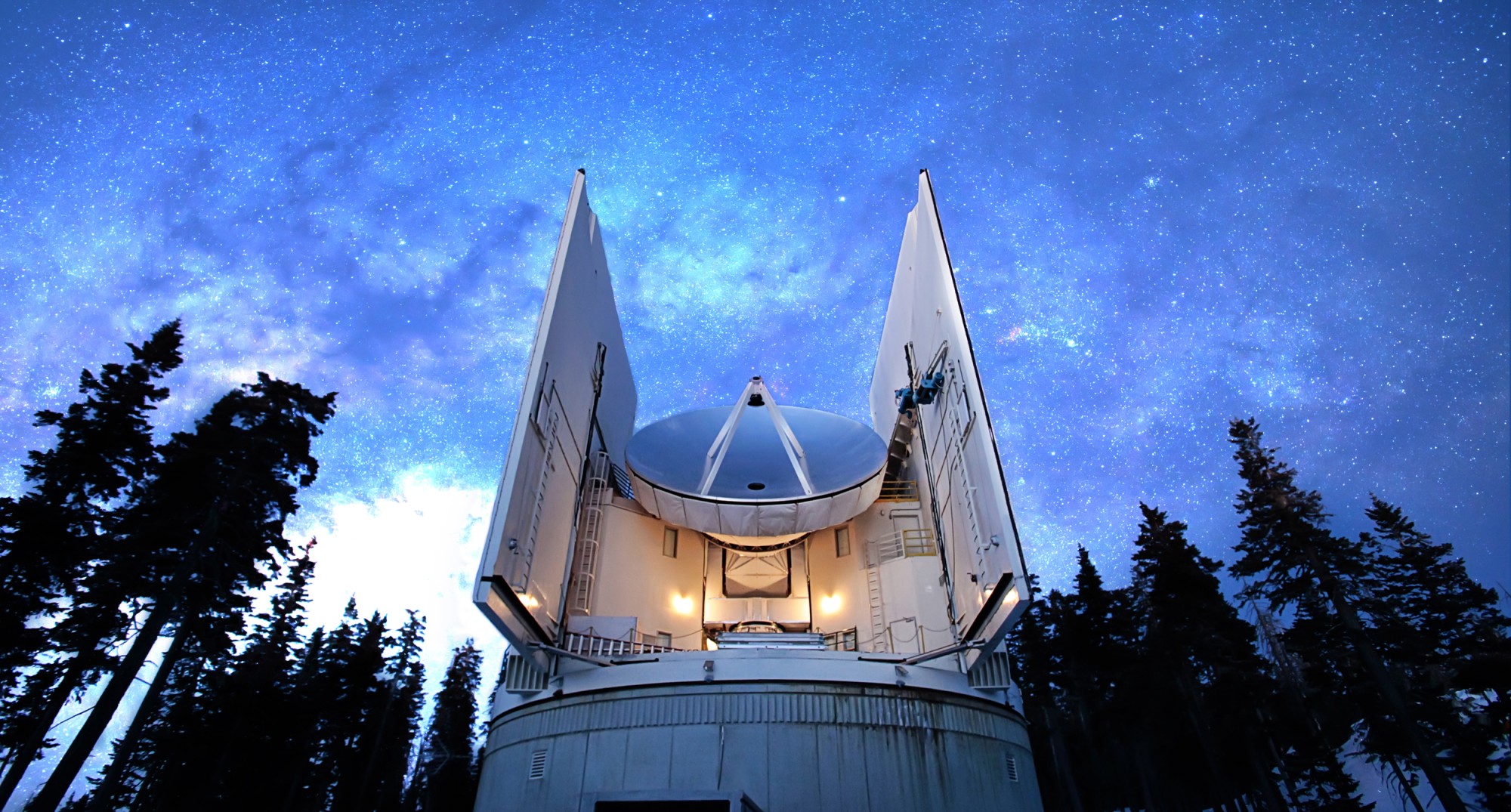Black hole picture could unlock new era in astronomy
Corey S. Powell, NBC News | April 12, 2019, 1:33 PM UTC
Experts predict an avalanche of new discoveries about space.

The Submillimeter Telescope in Tucson, Arizona, was one of eight linked radio telescopes that made up the Event Horizon Telescope Array.
David Harvey / National Science Foundation |
“A once-in-a-lifetime result,” exulted Shep Doeleman, director of the Event Horizon Telescope, the international team of scientists who created the image using a network of radio telescopes linked together to form a single, Earth-size observatory.
“I couldn’t imagine that I’d live to see a telescopic image of a black hole,” said Jean-Pierre Luminet of the French National Center for Scientific Research, who created the first visualization of a black hole in 1979. Yale astronomer Priya Natarajan was more succinct. “My first reaction on seeing the image was: Wow!”
The remarkable snapshot shows a monster black hole 55 million light-years from Earth in the neighboring galaxy M87. Nicknamed Pōwehi by some members of the team (it's pronounced poe-vay-hee), a word from Hawaiian mythology meaning “embellished dark source of unending creation”), the object is 6.5 billion times as massive as the sun and has a diameter of 24 billion miles. Its mass and powerful gravity cast a shadow against the bright, hot gas swirling around it, creating a distinctive donut shape.
The Event Horizon Telescope project is the culmination of a century of speculation about black holes, collapsed masses where gravity is so intense that no matter or even light can escape. Until now, scientists eager to understand these enigmas could study them only by indirect means: testing theories with computer simulations or watching how black holes’ intense gravitation affects matter and space around them. Now the objects are visibly, almost tangibly real.
Even more, the first picture of a black hole heralds a new era in physics. Now that they can observe these bizarre objects directly, experts say we can expect an avalanche of new observations — and new cosmic discoveries.
EINSTEIN KEEPS ACING THE TESTS
One of the most striking things about the image of Pōwehi is how closely it resembles black hole simulations created with the help of computer models. Those models are all based on Einstein’s general theory of relativity, making the match an impressive vindication of the famous physicist’s ideas.
“We were surprised by how clear the signature was,” Doeleman told NBC News MACH in an email. “Einstein’s theory of gravity predicts that we should see a ring of light, but to have it come through so clearly rocked us back on our heels.” (A small irony: Einstein himself didn’t believe in black holes, arguing that while his equations indicated that such objects were theoretically possible, they “do not exist in physical reality.”)
The light ring around Pōwehi is distinctly lopsided, another predicted effect. Gas around the black hole is orbiting furiously, and the side that is circling toward Earth appears brighter than the side that is circling away. The pattern indicates that the black hole is rotating clockwise from our perspective, Heino Falcke, a radio astronomer at Radboud University in the Netherlands and a member of the Event Horizon Telescope team, said in an email.
The picture doesn’t reveal what happens at the event horizon, the theoretical “surface” of a black hole. The event horizon is one of the strangest predictions of Einstein’s relativity, the point of no return where time comes to a standstill. So far, the Event Horizon Telescope observations cannot confirm even the existence of an event horizon.
“It looks like an event horizon and it quacks like an event horizon, but you can never exclude something that is almost like an event horizon producing a similar shadow,” Falcke said. “Each competing model has to be tested one by one. The cool thing is — now we can.”
TO WARPED SPACE … AND BEYOND
The astonishing power of the Event Horizon Telescope means that a lot of other outstanding questions in astronomy become suddenly answerable, too.













 Reply With Quote
Reply With Quote